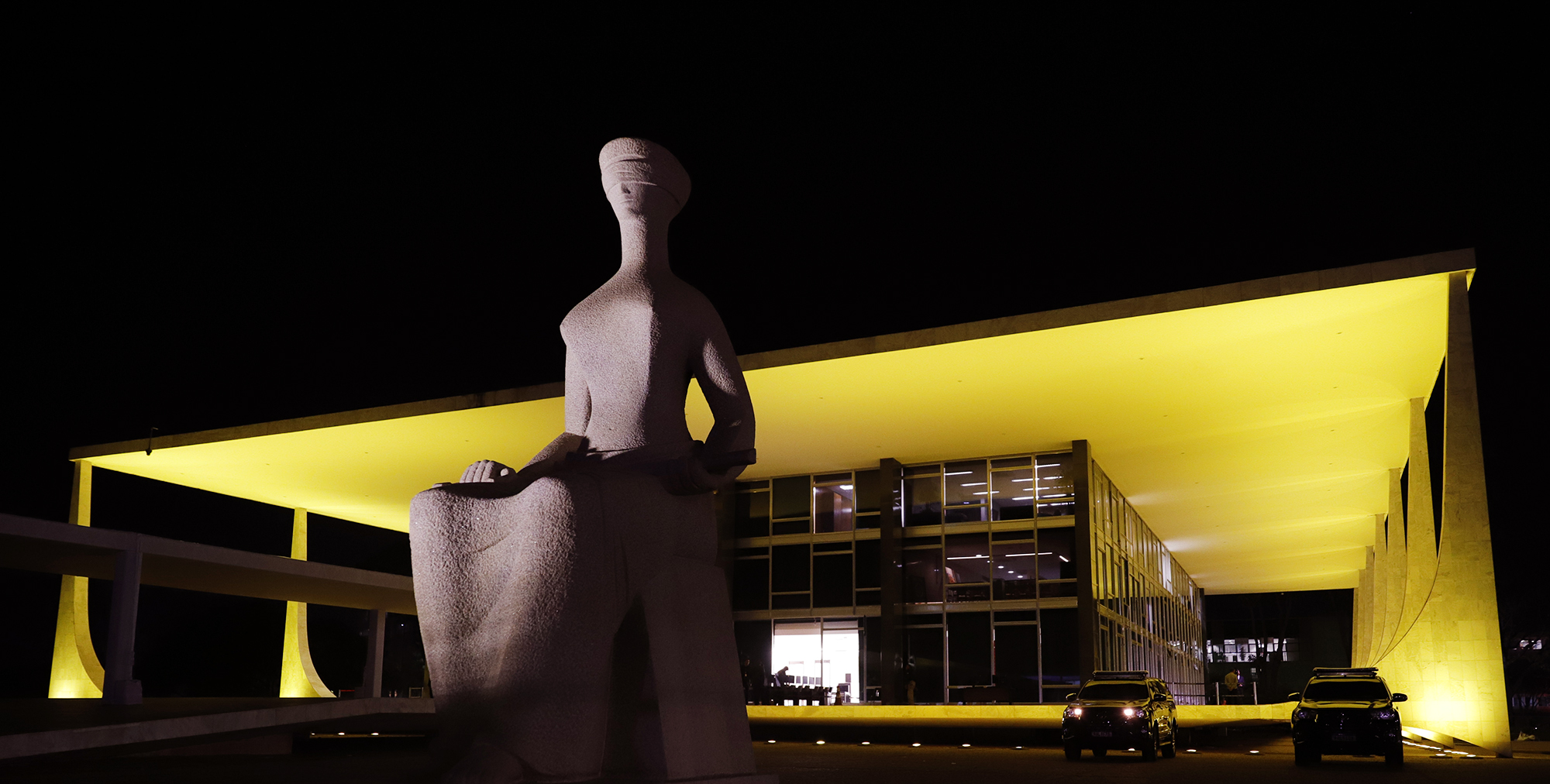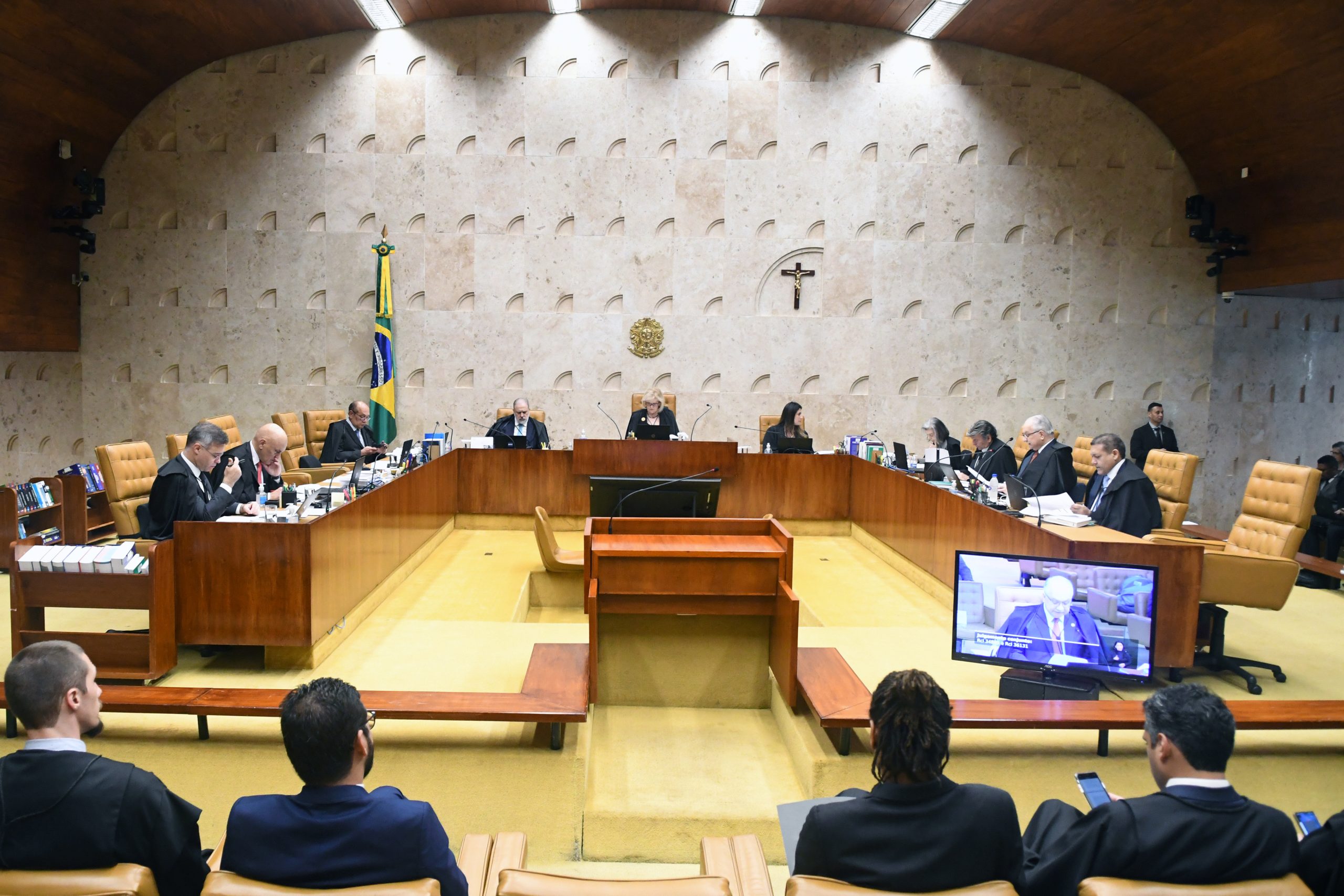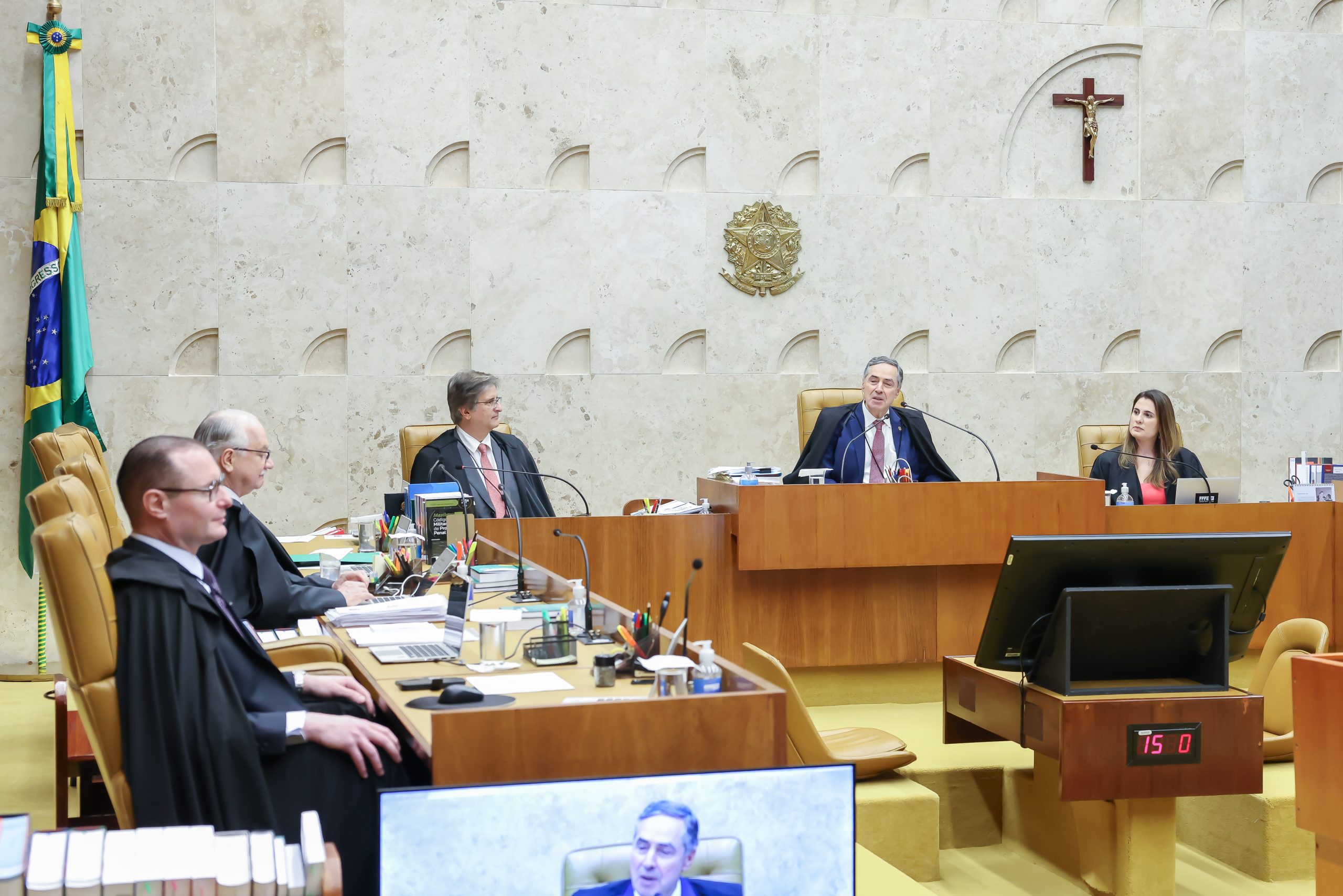Alana Sá Leitão,
University of Toronto
What kind of secularism does one find in Brazil?
A large square building designed by modernist architect Oscar Niemeyer seems to float in the middle of a small lake within the Brazilian capital city of Brasilia. In front of the building, there rises before us a woman 3.3 meters tall, sitting blindfolded, holding a sword in her lap, the work of sculptor Alfredo Ceschiatti. This is Brazilian the Supreme Court. One of three buildings that together form a triangle representing the balance among the three institutions governing the country: the executive, the legislative, and the judiciary.

There are many rooms and offices in the Supreme Court building, but the one easily recognizable from the morning paper and the 8 o’clock news is the main chamber, where the Supreme Court judges convene over decisions shaping the nation. A large room decorated mainly in beige tones, the main chamber accommodates interested or curious members of the general public along one side, while on the opposite side sits the bench of the President of the House – who is elected among the Supreme court judges every two years to lead the institution. On either flank, two more identical desks extend toward the audience of spectators; behind each of them rest five seats waiting to accommodate the other ten judges of the Supreme Court. The mural behind the President’s table is an artwork by Athos Bulcão. Bulcão composed the mural with large rectangular boards of beige marble. There is a half-circle in the bottom-left corner of each board. In the middle of the wall, there is a somewhat diminutive icon of Brazil’s coat of arms. On its right the Brazilian flag stands in a pall from the floor, and on its left, also placed on the wall, we recognize an image of Jesus Christ’s crucifixion. The image is placed in one of the half circles, but while all the others are exactly the same size, the one that houses the crucifix is much larger, indeed is the perfect size to receive the crucifix, itself another piece by Ceschiatti.


The Supreme Court is not the only one of the three buildings with a crucifix; the National Congress also houses one in one of its main chambers. In fact, most Brazilian public buildings host an image of Jesus on the cross. Considered a particularly Catholic symbol, the presence of the image in the Supreme Court has raised many objections since its installation in Bulcão’s mural in 1976. Even though Brazil remains the country with the world’s largest Catholic population, the percentage of people declaring themselves “Evangelical”[1] has raised to 22% in the last few decades. The evangelical growth, nevertheless, is not only in number of adherents. It is also in political power. Today, 31% of Congress representatives declare themselves “Evangelical” or “Christian” (ISER, 2022)[2], and the support of pastors from mega-churches is now important for generating political capital before elections, even for presidential candidates. However, it is not from these Congress representatives that the objections to the presence of the “Catholic cross” on public buildings has come, but mainly from self-declared non-religious and/or secular sections of society. People who identify as not having a religion grew to 8.04% of Brazil’s population
Brazil’s current Constitution, established in 1989, marked the end of three decades of dictatorship and initiated a new democratic phase in the country. It protects freedom of conscious and creed through article 5, paragraph 6. “É inviolável a liberdade de consciência e de crença, sendo assegurado o livre exercício dos cultos religiosos e garantida, na forma da lei, a proteção aos locais de culto e a suas liturgias”[3]. It also limits the kinds of relationships the State may have with religious organizations, through article 19 “É vedado à União, aos Estados, ao Distrito Federal e aos Municípios: estabelecer cultos religiosos ou igrejas, subvencioná-los, embaraçar-lhes o funcionamento ou manter com eles ou seus representantes relações de dependência ou aliança, ressalvada, na forma da lei, a colaboração de interesse público”[4]. Nevertheless, the same Constitution, in its preamble, affirms “Nós, representantes do povo brasileiro […] promulgamos, sob a proteção de Deus[5], a seguinte Constituição Da República Federativa Do Brasil”.
In 1989, the separation between Church and State in Brazil was already a century old, being one of the new articulations of government brought after the establishment of the Republic in 1889. At that point, the State was separating from the Catholic Church, hitherto the official religion of the country. However, this loss of the status of official religion did not mean that starting from this specific moment in history the boundaries between Church and State were completely clear. The Catholic Church, and later other religious groups, found ways to keep a close relationship with different governments[6]. An example is the “religion class”, which still teaches Christian believes and biblical content in many public schools around the country.
However, the crucifix we are analyzing here is not an inheritance from before the Republic. The Supreme Court is part of the “Three Powers Square” in Brasília, Brazil’s current political capital. This city was built with this objective and its construction started in the 1957. Fort this reason, the mural and the crucifix now reverentially displayed behind the Supreme Court President’s bench in the main chamber were only installed in the 1970’s; almost 90 years after Brazil had become a secular state.
It is in this chamber that many decisions about the future of Brazil are taken – including a particular decision about the future of the many religious objects present in public buildings throughout the country. There is an ongoing controversy about religious symbols in government buildings. Many times, in different parts of the country motions have proposed to take these objects away and forbid their display. In each case, after long discussions, the images have stayed in (or been returned to) the buildings. However, a new motion has climbed its way to the Supreme Court. In 2020 the Supreme Court accepted a referral for adjudication that in 2009 proposed religious symbols to be removed for public buildings in the State of São Paulo. The Supreme Court decision for this case will set a precedent for any other similar cases around the country. The proposal is still in process, and the Supreme Court is still hearing different opinions on the subject.
At the center of my investigation is how debates about images in the public sphere – debates conducted in the public sphere – construct the relationship of Brazilian secular democracy with Christian religiosity. To understand the debate in Brazil, it is also important to know that the term used both in juridical language and in the public sphere is not “secular”, but “laico”[7]. Probably you are more familiar with the similar French term “laicité”. They both come from the same semantic origins and ideals towards republicanism. However, the term in Brazil does not have the same historical baggage as in France. In truth, there are as many discussions about the precise semantic difference between Secularism and laicité as there are about the different ways actual States employ them. Not having the space to proper discussion here, I am only evoking this debate to remind the reader that Secularism takes many shapes and forms around the world. Countries such as Brazil are still testing its limits and boundaries – as the case of the crucifixes in public buildings exemplifies.
The soon to be taken decision by the Supreme Court on the matter is going to establish a new phase on the discussion of the meaning of Secularism in Brazil. However, independent of what they rule, this case already raises a few questions for those interested in the relation between State and Christianity. What does it mean when Brazilian Evangelicals do not oppose a Catholic materiality, and even side with those who demand its permanence? How the people who propose these motions constitute themselves as a specific group? What does it mean to have a sentence made in a court in the presence of a crucifix? Or, to return to my title question, what kind of secularism do we find in Brazil? I finish this small entry wishing we can soon find the opportunity to discuss these questions further.
3 April 2025
[1] The category Evangelical in Brazil’s census include mainline Protestants, Evangelicals, and Pentecostals. Nevertheless, the “evangelical” characteristics of the social imaginary are mainly Pentecostal. Maybe because of the 22% of the population who are Evangelical, 60% are Pentecostals. (CENSUS, 2010)
[2] The ISER (Instituto de Estudos da Religião) analyzed the elected Congressional Representatives’ religious profile through self-identification. The first source of data was the representatives` applications to run the elections. Nevertheless, not all of them filled the category religion. In these cases, the ISER’s researchers analyzed the representatives’ election campaign material to see if they define themselves as belonging to any religious group on them. Because the institute used the self-identification method there are 16.2% of Congress Representatives who said they were Christian without specify any further, while 14.8% declared to be Evangelicals, and 45.4% declared to be Catholics. Another important data on the subject is the number of Congress Representatives who are officially part of the Frente Parlamentar Evangélica, popular known as bancada Evangélica, Evangelical Caucus. Currently there are a total 594 Congressional Representatives. From this group, 210 are members of the Evangelical Caucus. This number is equivalent to 35% of the Congress. Nevertheless, not every member of the Evangelical Caucus is a self-declared Evangelical; many are political allies of the group.
[3] Author’s translation: Freedom of conscience and belief is inviolable, the free exercise of religious worship is ensured and, in accordance with the law, the protection of places of worship and their liturgies is guaranteed.
[4] Author’s translation: The Union, the States, the Federal District and the Municipalities are forbidden from: establishing religious cults or churches, subsidizing them, obstructing their operation or maintaining relations of dependence or alliance with them or their representatives, except for collaboration in the public interest in accordance with the law.
[5] Authors translation: We, the Brazilian people representatives, proclaim, under God’s protections, the following Constitution of the Federal Republic of Brazil.
[6] It is important to be clear that there are different sectors in the Catholic Church and different accesses and relationships with governments.
[7] Probably you are more familiar with the similar French term “laicité”


